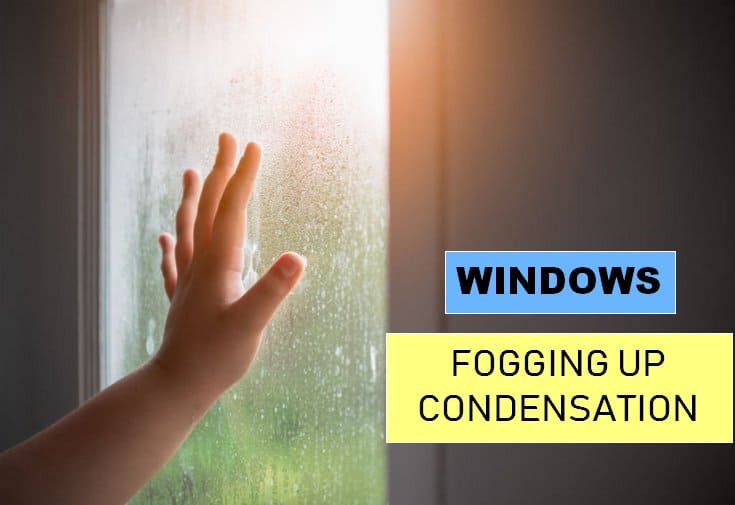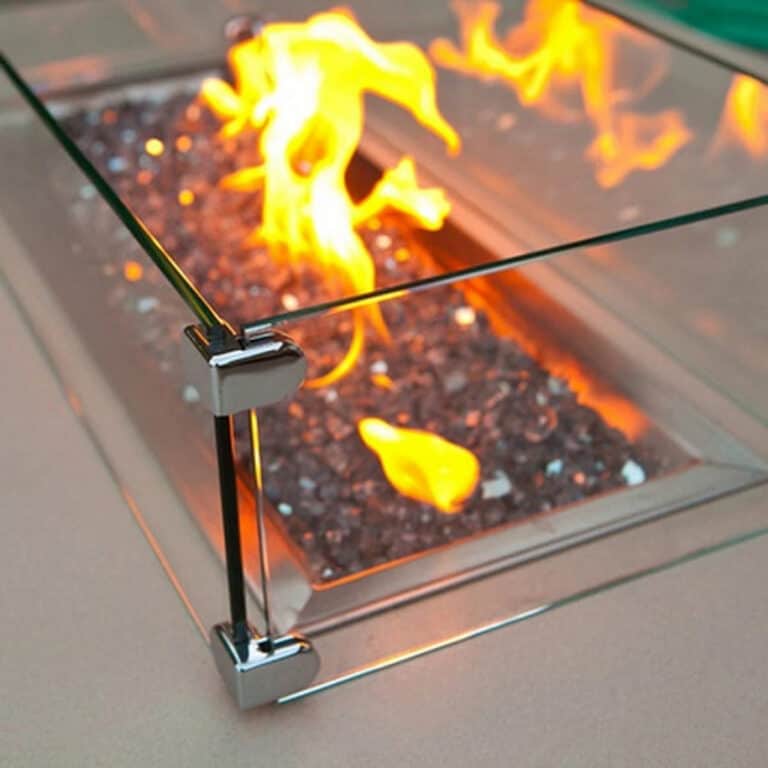House Windows Fogging Up on Outside: How to Prevent Condensation?

Window fogging is an interesting phenomenon. It can be an inconvenience because after you wipe your windows clean, it happens again. The worst case is that it becomes a nuisance: when the fogging happens on the outside of the window, but you may think it is from the inside.
Window fogging is a problem that commonly occurs in the winter when the temperature outside is colder than the temperature inside. This can cause a number of issues, including decreased visibility and increased energy usage.
For a variety of reasons, fog can appear between the panes, on the outside of the window, or on the inside of the glass. The major cause of outside window fog is a substantial temperature differential between your home and the outside. Other elements play a role, but this is the most important.
We’ll talk more about why your windows may fog on the outside, and we’ll also talk about what you can do to make it less likely or prevent condensation from happening if you want to.
What Causes Window Fogging?
Windows fogging can be a mystery for some people. Why does the glass in my window become fogged?
Windows fogging can be caused for a variety of reasons. Some of these reasons are environmental, such as high humidity or changes in the weather.
The major cause of external fogging is a substantial temperature difference between the inside and outside parts of the home. So, in particular, the temperature inside your home is much lower than the temperature outside.
When the temperature and humidity are drastically different, moisture condenses on the coldest surfaces. In this case, it is the external glass of your window.
You’ve likely observed this phenomenon several times while enjoying a beverage on a warm day. You see that the outside of your glass, cup, or other container can become covered in water, almost sweating.
The same thing might happen in the opposite way: if the temperature outside is significantly lower than inside your home, fogging will occur on the inside of the window glass.
Other reasons for window fogging can be due to the design of the window, such as poor insulation or old seals.
In some cases, windows may fog up because of something that is happening inside the home, such as steam from cooking or showering.
Fog may form on almost any portion of your glass. The panels on the outside, the panels on the inside, and even the gaps in between the panes themselves.”
Condensation is more common when there is more humidity, so if it is highly humid inside your house, this becomes a greater problem.
No matter what the cause, there are ways to prevent and fix windows from fogging up.
The Scientific Reasons Behind Windows Fogging
While it is normal for windows to fog up in cold weather, there are scientific reasons why this happens.
Today’s windows are sealed using advanced materials. It’s not just empty spaces between the seals. There are specific inert gases, such as argon, that are contained within those seals.
These gases are trapped between your modern window’s two panes. A very thin layer of the silver oxide coating is also on the inside of the outer pane.
The silver oxide coating acts as a reflector for infrared photons from the sun. Even so, fogging between the two panes is possible due to the deterioration of the seals between the panes over time.
Some of the material that seals your windows has become wet and can no longer keep the moisture out.
In the end, how quickly this happens depends on many things, such as the materials used, the real environment, the amount of direct sunlight, how the windows are made, and so on.
No matter what you do, though, the seals on the window will eventually break, so you can expect some condensation between the panes.
This isn’t the same as external pane condensation, which occurs on the window’s outermost surface that is exposed to the elements.
But, to be honest, there’s little you can do about it except make sure your home’s temperature is roughly the same as the outside temperature (and who wants that?).
What if the Fog is Between the Panes?
From the inside, you may think the window fog is on the outside. But the fog might actually be between the inside and outside panes. Why this happened isn’t quite the same as why the other two things happened. Well, in this case, it’s usually an issue with the window itself.
Condensation between panes often indicates a weakening of the seals between them, enabling moisture to enter. It’s a common issue with older or untreated windows.
Direct sunlight may speed the breakdown of a seal, so it’s more likely to happen on the side of the house that gets the most sun.
You shouldn’t have to be concerned about something like this if your windows are reasonably new. Even if there is condensation between both the panes of your windows, it is not like this is doing a lot of damage. Actually, it’s quite common.
However, if you are worried about possible energy loss, or you just don’t like the way it looks, getting it checked out by a professional is a wise decision.
Choosing the Right Glass
Not all glass is created equal. Choosing the right glass is, without a doubt, the most crucial component of a window. This will make all the difference.
There are many types of windows that use various types of glass. Some are made to work better in specific conditions and environments, while others are made to save energy.
This is crucial not just for reducing fog and frost on your windows, but also for saving money on your energy bill, minimizing interior fabric fading, and making your house cozier as a result.
Besides making sure that your windows are the best fit for your environment, there are other things to think about.
For example, you should think about how much noise you would like your window to block from the outside, how much sunlight you will get, how high your house is, and how big the window needs to be.
All of these factors go into deciding which type of glass is ideal for your home.
Different Types of Glass for Your Needs
Even though there are many different brands, there are really only a few different “types” of glass. The following are the most common types:
- Double-pane glass with detachable grilles and shutters between the panes
- Insulating glass with argon gas between the panes and a reflective covering, as previously indicated.
- Three panes of glass with blinds, decorative panels, and cellular shades in between. There are also removable grilles.
Each of these varieties of glass has a distinct benefit, but as you can probably guess from the description, some are far more costly than others. Even so, you should examine every one of these different types of glass. Some types or brands may be more prone to fogging in your situation than others.
Choosing the Right Glass Manufacturer
The only way to keep your windows from fogging up is to purchase a specific type of window to begin with. If the ones you have are having issues with fogging, replace them. It’s critical to choose the right manufacturer for this. Some companies are more renowned than others, as with any product.
It is important to choose the right glass manufacturer when looking for products made from this material. There are many companies that produce glass, and not all of them have the same standards or quality control procedures. It is important to do some research before selecting a supplier.
You should look for a company whose products have passed tests in many areas, most importantly in moisture penetration. After all, moisture penetration causes the majority of fogging. Therefore, you’ll want to know that the manufacturer has tested their products for it if you want to prevent much worse inter-pane fogging.
Another essential factor to consider when selecting a glass manufacturer is the company’s reputation. It is important to find a supplier that has a good reputation for quality and customer service. Ask other businesses if they have had any good or bad experiences with a particular supplier.
You’ll probably also want to trust a manufacturer that has international standards for product quality and quality management like ISO, EMAS, and RC.
These checks usually come after inspections that look at the quality of the finished product and the way it was made.
Needless to say, a manufacturer whose products have been verified is far more reliable than one who does not.
How to Prevent Condensation on Windows?
Condensation happens when moisture trapped in cold air hits a surface cold enough to change it back into water.
Because the temperature differential between the outside and the interior are highest in the winter, window panes are particularly sensitive to condensation.
The heat from your body and breath also plays a role, since it warms the air and increases the amount of moisture in it.
Now that you know the causes of window condensation and fogging, it is easier to understand how you can do something about it. You can take the below steps to prevent or minimize window fogging and prevent condensation.
- One way to prevent fogging is to keep your windows clean and free of dirt, dust, and other debris. These particles are the perfect place for water and dampness to hang on.
- You can also improve air circulation in your house by opening the windows a bit or using the fan setting on high.
- Make sure that all the windows and doors in your home are properly sealed. If there are any cracks or gaps, you can use caulk or weatherstripping to seal them up.
- You should also ensure that your windows are properly insulated. If they are not, you can add insulation yourself or have a professional do it for you.
- Avoiding activities that produce excess moisture can also prevent exterior window fogging. For instance, taking shorter showers, using lids on pots when cooking, and using a clothes dryer instead of hanging wet clothes inside can all help reduce the humidity levels in your home.
- Buying a humidifier or a moisture eliminator is a good idea because it will pull extra moisture out of the air.
- And finally, if all else fails and your windows do fog up, use a defroster to clear them quickly and easily.
Insulation and Weatherstripping Techniques for Windows
Insulation and weatherstripping techniques can be effective in preventing condensation on house windows. Insulation helps to regulate the temperature inside your home, which can reduce the likelihood of condensation. Weatherstripping, on the other hand, can help to seal gaps around your windows, which can prevent cold air from entering your home and causing condensation.
One effective insulation technique for windows is to use window insulation film. This thin film is applied directly to the windowpane and creates an insulating barrier that helps to regulate the temperature inside your home. Window insulation film is easy to install and can be removed without leaving any residue.
Another insulation technique is to install insulated window shades or curtains. These window treatments not only add an additional layer of insulation to your windows but can also help reduce the amount of sunlight that enters your home. This can be especially beneficial during the summer months, when excess sunlight can raise the temperature inside your home and increase the likelihood of condensation.
Weatherstripping techniques can also be effective in preventing condensation on house windows. One common weatherstripping technique is to use adhesive-backed foam tape. This tape is applied directly to the window frame and helps to seal gaps between the frame and the window. This can prevent cold air from entering your home and causing condensation.
Another weatherstripping technique is to use a silicone-based caulk. This type of caulk can be applied to the gaps around your window frame and can provide a more durable and long-lasting seal than foam tape. However, it may be more difficult to apply and remove than foam tape.
In addition to these methods, it’s important to keep your windows in good shape and clean them regularly. Dirty or damaged windows can be more susceptible to condensation, so it is important
Final Thoughts
In conclusion, there are several ways to prevent condensation and minimize window fogging. Choosing the right glass and manufacturer for your windows is crucial. The quality of the glass is important, but you also need to find a company that can produce the type of glass you need in the size and shape you require.
Window fogging can be a pesky problem, but with a few preventative steps, you can minimize it or stop it from happening altogether. In cold weather, the humidity in the air condenses on the glass of your windows, causing them to fog up. There are a few things you can do to help reduce this: keep your windows clean, improve air circulation inside your home, and use a defroster.






